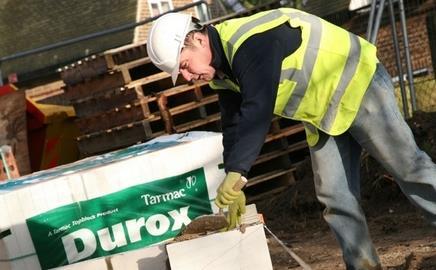A guidance note is always open to personal interpretation
Unfortunately, misunderstanding can sometimes deliver disastrous results. Misinterpretation of the Green Guide, the BRE’s online tool - which rates products on an A+ to E scale, according to the environmental impact of the materials during manufacture - could also have serious consequences for the Government’s target to ensure all new build homes are zero carbon by 2016.
Designers win BREEAM and Code for Sustainable Homes (CfSH) credits when specifying materials with a high rating. According to recent reports, some local authorities have made it mandatory for new buildings to be specified only with only high rated products and materials from the Green Guide.
This is a worrying misconception, which could ironically lead to a generation of inefficient properties that use up huge amounts of energy. According to the BRE itself, insisting on only using materials that are given a high rating in the Green Guide based on their impact during manufacture could also lead to many materials being excluded, despite performing better when in use.
It is critical that the Green Guide is not used as a ‘tick-box’ exercise but rather in the wider context of the CfSH and BREEAM. Both are non pre-prescriptive systems which focus on the overall sustainability performance of a property, focusing on the long term, whole life impacts.
The Green Guide assesses the rating of products over a 60-year study period by measuring against 13 factors such as climate change, mineral resource extraction and fossil fuel depletion. It then awards each material a score in ‘Ecopoints’ and takes the overall impact of the best and the worst results for a particular structural element and building type.
Critically, buildings are the sum of all parts and using one sole criterion such as embodied carbon or recycled content to make product specification choices will not deliver a property that is energy efficient in the long-term.
It is vital to remember that creating low and zero-carbon properties is about delivering an overall sustainable package and addressing not just embodied energy. Embodied environmental impacts, as detailed in the Green Guide, are only one element of the overall sustainability and energy performance of a building, so it is critical that meaningful analysis is based on how materials perform together in-situ.
At Tarmac, we are building two concept homes (one to Level 4 and one to Level 6 of the CfSH) at the University of Nottingham to demonstrate that it is possible to build affordable, scaleable low and zero carbon homes using traditional masonry materials. The Homes, which are being built by Lovell, will not just use high rated products from the Green Guide. We will also focus on delivering a sustainable building envelope that deliver enduring energy efficiency and performance to meet the highest levels of the CfSH. The Homes will also be lived in by visiting academics, who will monitor their energy performance in a realistic environment.
It is important that we use this testbed project to show the construction industry and local authorities – and ultimately, the Government - that the sustainability and energy performance of new-build properties should be addressed holistically. Taking an approach based on the embodied energy of individual elements is short sighted and will only serve to jeopardise our ability to deliver zero carbon properties.
Postscript
Ian Gray is technical manager for Tarmac

























